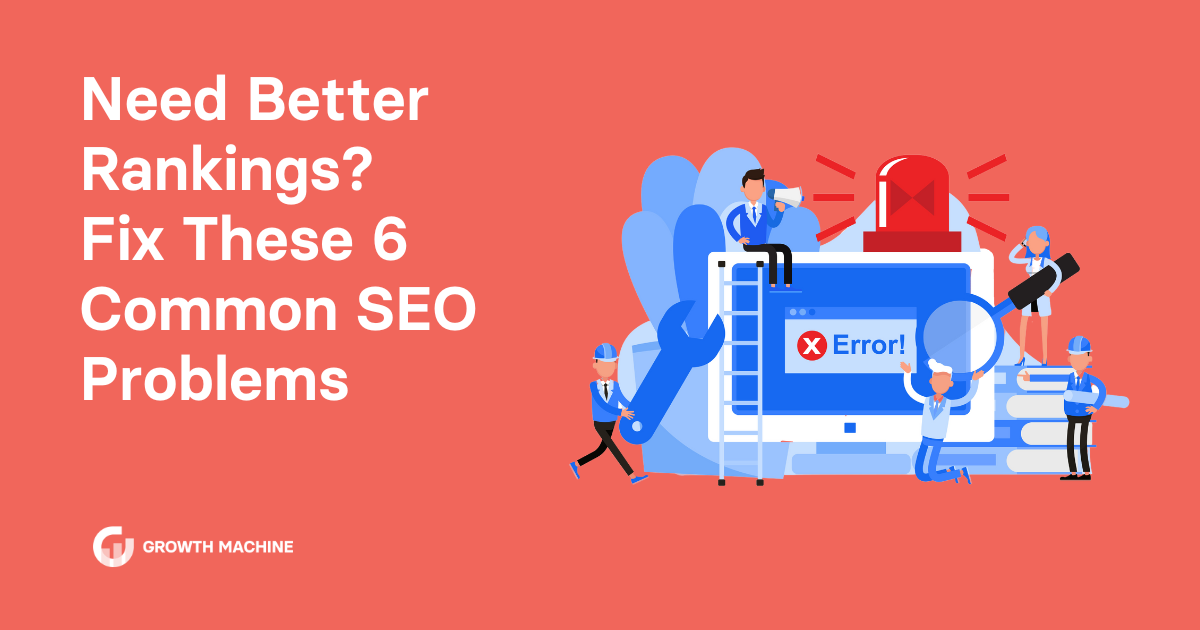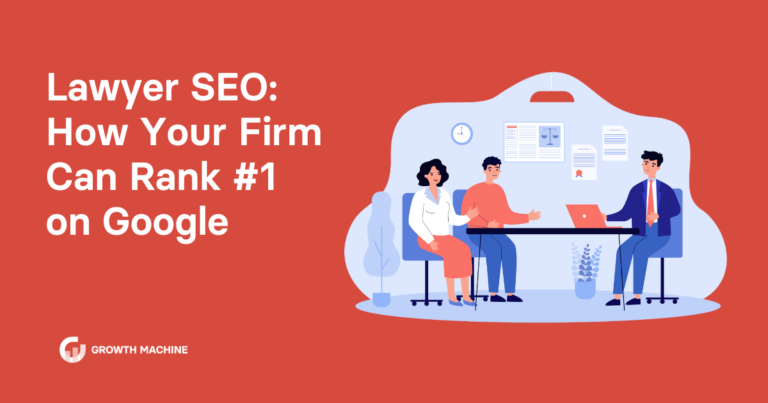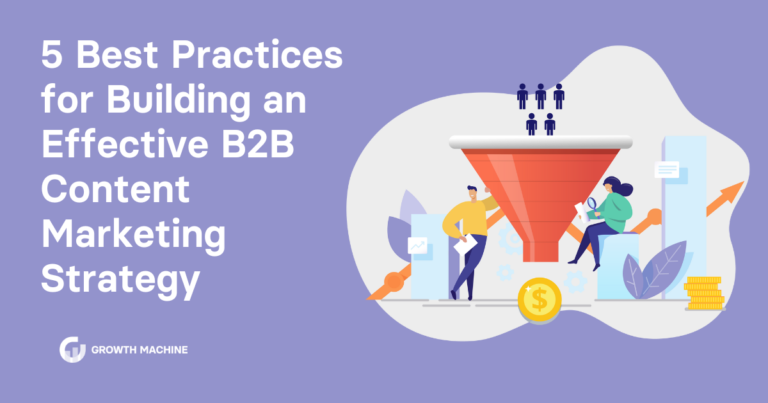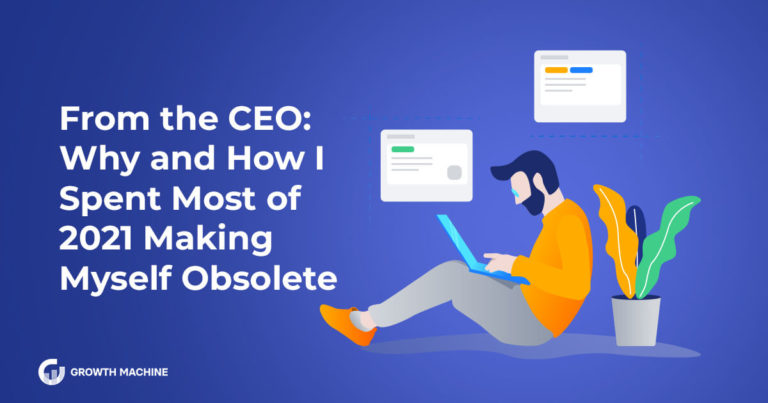Need Better Rankings? Fix These 6 Common SEO Problems
As a website owner, you’re pulled in many directions, from content creation to sales to customer service. Search engine optimization (SEO) is one of the best low-cost ways to get more traffic to the website you manage, but it isn’t easy.
On top of complicated jargon and technical steps, SEO comes with a host of challenges and problems. One wrong move will hurt the user experience, damage your rankings on the search engine results pages (SERPs), and reduce organic traffic. Yikes!
We know that SEO is far from straightforward, especially if you aren’t an SEO pro yourself. But SEO is integral to digital marketing, so whether you’re a small business owner, a blogger, or an eCommerce entrepreneur, you need to know how to address the most common SEO mistakes that impede progress.
In this in-depth guide, we’ll share the six most common SEO problems and explain how to fix them.
6 Biggest SEO Problems for Site Owners — and What to Do About Them
Your website is at the mercy of search engine algorithms. If they catch a whiff of common problems on your site, like a broken link, they’ll ding you and reduce your rankings.
You can’t control everything when it comes to SEO, but you have the power to address some SEO issues. Let’s look at the six most common SEO problems and how to do better.
1. Poor Rankings
This is the number one complaint businesses have about SEO. You put in a lot of work and realize you’re still not ranking well on the SERPs. Because search visibility has a direct influence on website traffic, this is a big stumbling block that prevents you from reaching your target audience.
If your site isn’t visible in search, you might as well be invisible. That’s why low rankings are a five-alarm emergency.
Now, you can’t fix poor rankings overnight. Nothing in SEO happens quickly, but over time, you can improve rankings through:
- Identifying relevant keywords and phrases your target audience searches for with in-depth keyword research. Look for long-tail keywords to reduce competition and see quicker SEO gains.
- Optimizing your website’s meta descriptions, headers, title tags, image alt tags, and content with target keywords. Avoid keyword stuffing, or using too many keywords in content in a way that distracts from a good user experience.
- Creating high-quality content that addresses the user’s search intent and needs.
- Fine-tuning your page speed, load speed, and responsiveness for mobile users.
There’s no magic potion for poor search rankings, but these white hat best practices are the best antidote to search invisibility.
2. Indexing Problems
Indexing problems are a little trickier to solve. These SEO issues happen when search engines like Google can’t crawl certain web pages.
If search engine bots can’t crawl your site, they can’t pull data about your content, site structure, or user experience. Without proper indexing, even the most optimized pages won’t show up in the SERPs, drastically hurting your website’s organic traffic.
If you have an indexing problem, it means something is preventing search engines from accessing your website. The biggest culprit is usually a file called robots.txt, which adds a noindex tag to your site. Make sure this isn’t blocking crawlers.
If that isn’t the source of the issue, log into Google Search Console to identify and fix indexing problems. We recommend checking this tool at least once a week to spot setbacks like messy redirects or code rendering issues.
Depending on the indexing issue, you may need to hire a webmaster or technical SEO team to resolve it, so keep that in mind.
3. Penalties
Penalties are a huge SEO problem. A penalty is a slap on the wrist from search engines for violating their guidelines about keyword stuffing, duplicate content, and countless other no-nos.
You get a penalty for engaging in less-than-ethical SEO practices, also called black hat SEO. These penalties often lead to a catastrophic dip in rankings, which will hurt your site’s organic traffic and credibility.
While tough to bounce back from a penalty, it is possible. For starters, stop doing whatever it was that earned you the penalty. Comply with search engine guidelines (here are Google’s for reference), disavow spammy backlinks, and focus on creating quality content.
Once you prove your worth to search engines again, you’ll gradually see an improvement in your rankings. This can take time, though, so be patient.
If you genuinely think Google’s got it wrong, you can always submit a Reconsideration Request.
4. Site Speed Issues
A fast site is an SEO-friendly site — and vice versa. Slow sites provide a poor user experience and search engines will penalize your site for long load times. Page speed is a significant ranking factor because it leads to higher bounce rates and lower engagement metrics, especially for mobile devices.
Fortunately, the solution for these SEO problems is pretty simple: speed up your page load time. You can do that by:
- Minimizing CSS and JavaScript
- Allowing browser caching
- Using a content delivery network (CDN)
- Compressing images
- Using lazy load
If you aren’t sure where you stand, use Google PageSpeed Insights to rate your site speed and get suggestions for next steps. Fair warning, though: this can get a bit technical, so it might be best to work with a web developer on this technical SEO issue.
5. Duplicate Content
Duplicate content is an SEO problem that occurs when blocks of content are word-for-word the same or suspiciously similar. You can have duplicate content on your website or from other websites, ranging from blog posts to product descriptions to privacy policies (yes, really).
Search engines want to route searchers to relevant content. If your site has duplicate content, it confuses search engines because it’s unclear which version to index or rank. Ultimately, that dilutes your search engine visibility.
Use plagiarism tools like Copyscape to find and fix duplicate content on your site. If you can’t avoid duplication and really do need to duplicate content (like in the case of eCommerce product descriptions), use a canonical tag. This tells search engines which version of the duplicate content to index.
The best SEO strategy here is to create quality content from the start. Never copy anyone else’s content, even if it’s a privacy policy or terms of service template. If you’re struggling to create all-star SEO content, tap a team like Growth Machine. We help our clients strategize, execute, and optimize copy that follows Google’s guidelines to a T, helping you overcome finicky SEO problems like duplicate content.
6. Broken Links
Broken links are a pretty common issue. If your site has a broken link, it means the link doesn’t lead to its intended destination. If you’ve ever seen a “404: Page Not Found” alert, you’ve encountered a broken link. Broken links can be internal links to your own website or external links to other sites.
Search engines don’t like broken links because they hurt the user experience. Plus, if search engines find broken links, that tells them the site isn’t well-maintained, which could hurt your credibility.
The best way to fix broken links is to be aware of them. Conduct regular site audits with free tools like Google Search Console or Screaming Frog to identify broken links. Once you identify them, fix the links by:
- Updating them with the correct URL
- Removing irrelevant links for pages that no longer exist
- Creating a 301 redirect from the old URL to the new one
Lock in Your Marketing Strategy for Search Engine Wins
Even the most experienced website owners make SEO mistakes. It happens! What matters is how you respond to these issues. Instead of allowing them to go unaddressed, fix SEO problems the minute you discover them — the quicker you act, the better you’ll preserve your search engine rankings.
That sounds easy right now, but the elephant in the room is the sheer amount of time and energy required to optimize your website for SEO. Hiring a web developer or technical SEO specialist will help you overcome these SEO problems, but even these pros won’t know how to proactively boost your rankings.
The key is to build a robust online presence with quality content, and that’s where Growth Machine comes in. Our team of SEO experts does all of the content ideation and optimization for you so you get to focus on what matters: your business.
Contact us now to make a content plan and skyrocket your SEO rankings in just a few months.







